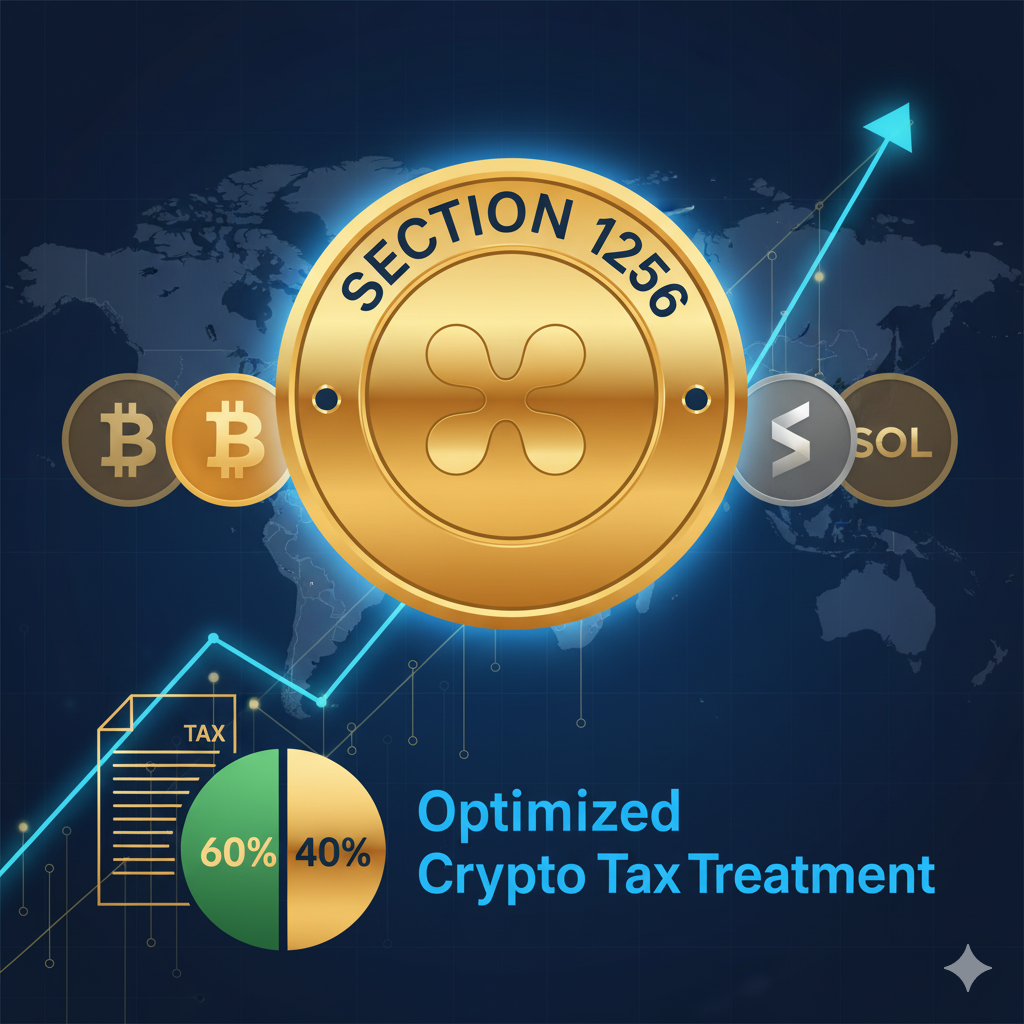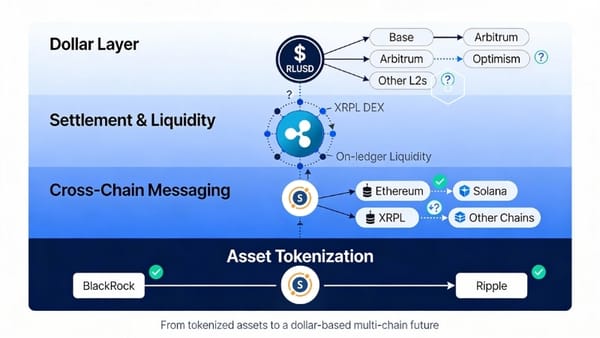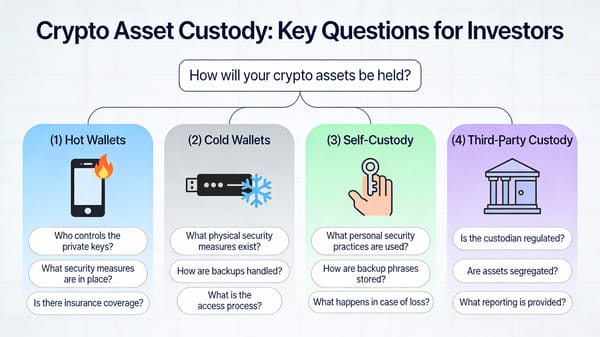XRP Joins Elite Tax Club: Section 1256 Commodity Status Confirmed
XRP officially qualifies for Section 1256 tax treatment, joining BTC, ETH, and SOL with favorable 60/40 capital gains rates—a major win for traders on regulated futures exchanges.

Major Tax Development Gives XRP Holders Favorable 60/40 Treatment
In a significant development for crypto taxation, XRP has officially qualified for preferential tax treatment under Section 1256 of the Internal Revenue Code, joining Bitcoin, Ethereum, and Solana as the only digital assets with this favorable status. This classification means XRP futures and options trading on CFTC-regulated exchanges now benefit from the same advantageous capital gains structure as traditional commodities.
Understanding the Section 1256 Advantage
According to testimony presented to the U.S. Senate Committee on Finance on October 1, 2025, by tax attorney Andrea S. Kramer of ASKramer Law LLC, Section 1256 provides two critical benefits for qualified digital assets. First, these contracts are marked-to-market on the last business day of each tax year. Second, and most importantly for investors, capital gains receive preferential 60/40 treatment: 60% taxed as long-term capital gains and 40% as short-term gains, regardless of actual holding period.
This tax structure offers substantial savings compared to standard cryptocurrency taxation. For active traders who frequently buy and sell positions, the difference is particularly pronounced. While ordinary short-term capital gains face rates up to 37%, the blended 60/40 rate significantly reduces the tax burden. As Kramer noted in her testimony, "At present, BTC, ETH, solana, and XRP currently trade futures and options on CFTC-regulated commodity exchanges, and they qualify as regulated futures contracts and as nonequity options."
XRP's Path to Commodity Classification
XRP's qualification stems from its trading activity on regulated futures markets. The Commodity Futures Trading Commission oversees these exchanges, and XRP futures contracts now trade alongside those of Bitcoin and Ethereum. This regulatory framework was essential for Section 1256 eligibility.
The timing of this classification carries additional significance given Ripple's ongoing legal clarity following resolution of SEC litigation. While regulatory uncertainty previously clouded XRP's status, the establishment of regulated futures trading has solidified its position as a commodity under federal law.
Implications for the Broader Crypto Market
This development highlights a growing divide in cryptocurrency taxation. The vast majority of digital assets remain subject to standard property tax rules, where every transaction—even trading one crypto for another—triggers a taxable event with gains taxed based on actual holding periods. Section 1256 status, by contrast, provides certainty and preferential rates.
Kramer's testimony emphasized this disparity: "Many additional digital assets are 'actively traded.' Because actively traded digital assets are commodities for purposes of Code § 475, the question turns on how actively traded is defined." She called on Congress to provide clearer guidance on which digital assets qualify as "actively traded commodities" to ensure fair and consistent treatment.
The limited number of cryptocurrencies with Section 1256 status—just four—creates competitive advantages for these assets in institutional portfolios. Tax efficiency matters significantly for professional traders and funds, potentially driving additional capital toward assets with favorable treatment.
Mark-to-Market Elections and Code § 475
Beyond Section 1256, XRP's commodity classification also makes it eligible for mark-to-market elections under Code § 475. This provision, typically used by securities and commodities dealers and traders, allows taxpayers to elect annual mark-to-market accounting. Under this regime, all gains and losses are treated as ordinary income, which can be advantageous for traders with significant losses, as ordinary losses can offset a broader range of income than capital losses.
Kramer recommended that Congress clarify and expand these mark-to-market provisions: "Congress should accordingly amend Code § 475 to clarify that digital assets qualify for mark-to-market treatment just like commodities." This would provide digital asset dealers and traders with the same flexibility available to those trading traditional commodities.
What This Means for XRP Investors
For individual XRP holders, the immediate impact depends on trading activity. Those who simply buy and hold XRP in spot markets won't directly benefit from Section 1256 treatment, as it applies specifically to futures and options contracts. However, the classification strengthens XRP's legitimacy as a mainstream financial asset and may facilitate new investment products.
Active traders using regulated futures markets see immediate benefits. The 60/40 tax treatment can reduce effective tax rates by 10 percentage points or more compared to short-term capital gains treatment. Additionally, Section 1256 contracts are exempt from wash sale rules, allowing investors to harvest losses for tax purposes while immediately reestablishing positions—a strategy prohibited for stocks and potentially for spot cryptocurrencies if Congress extends wash sale rules.
Ripple's Business and Adoption Prospects
This tax clarity removes a significant friction point for institutional adoption of XRP. Large financial institutions and corporate treasurers must consider tax implications when selecting assets for trading, hedging, or cross-border payments. Section 1256 status puts XRP on equal footing with Bitcoin and Ethereum from a tax perspective, potentially accelerating institutional interest in Ripple's payment solutions.
The classification also strengthens Ripple's position in partnership discussions with banks and payment providers. Regulatory clarity—both from the CFTC's implicit recognition of XRP as a commodity through futures approval and now through favorable tax treatment—addresses key concerns that have historically limited institutional adoption.
The Road Ahead
While XRP's Section 1256 status represents a major milestone, significant questions remain about digital asset taxation. Kramer's Senate testimony outlined numerous areas requiring Congressional attention, including wash sale rules, charitable donation provisions, lending transactions, and the treatment of staking rewards.
As Congress considers comprehensive digital asset tax legislation, the precedent established by Bitcoin, Ethereum, Solana, and now XRP may influence how lawmakers approach taxation of the broader crypto ecosystem. The key question is whether Section 1256 benefits will remain limited to these four assets or expand to include other actively traded cryptocurrencies.
For now, XRP holders trading on regulated futures markets can celebrate favorable tax treatment that positions the asset alongside the industry's most established players. This development represents not just a tax benefit, but recognition of XRP's maturation into a mainstream financial commodity with clear regulatory standing.
Sources
- U.S. Senate Committee on Finance, "Examining the Taxation of Digital Assets," October 1, 2025
- Testimony of Andrea S. Kramer, ASKramer Law LLC
- Internal Revenue Code Section 1256
- Internal Revenue Code Section 475
- Commodity Futures Trading Commission
- IRS Publication 550: Investment Income and Expenses
DISCLAIMER: This newsletter is for informational purposes only and does not constitute investment advice, advertising, or a recommendation to buy, sell, or hold any securities. This content is not sponsored by or affiliated with any of the mentioned entities. Investments in cryptocurrencies or other financial assets carry significant risks, including the potential for total loss, extreme volatility, and regulatory uncertainty. Past performance is not indicative of future results. Always consult a qualified financial professional and conduct thorough research before making any investment decisions.



